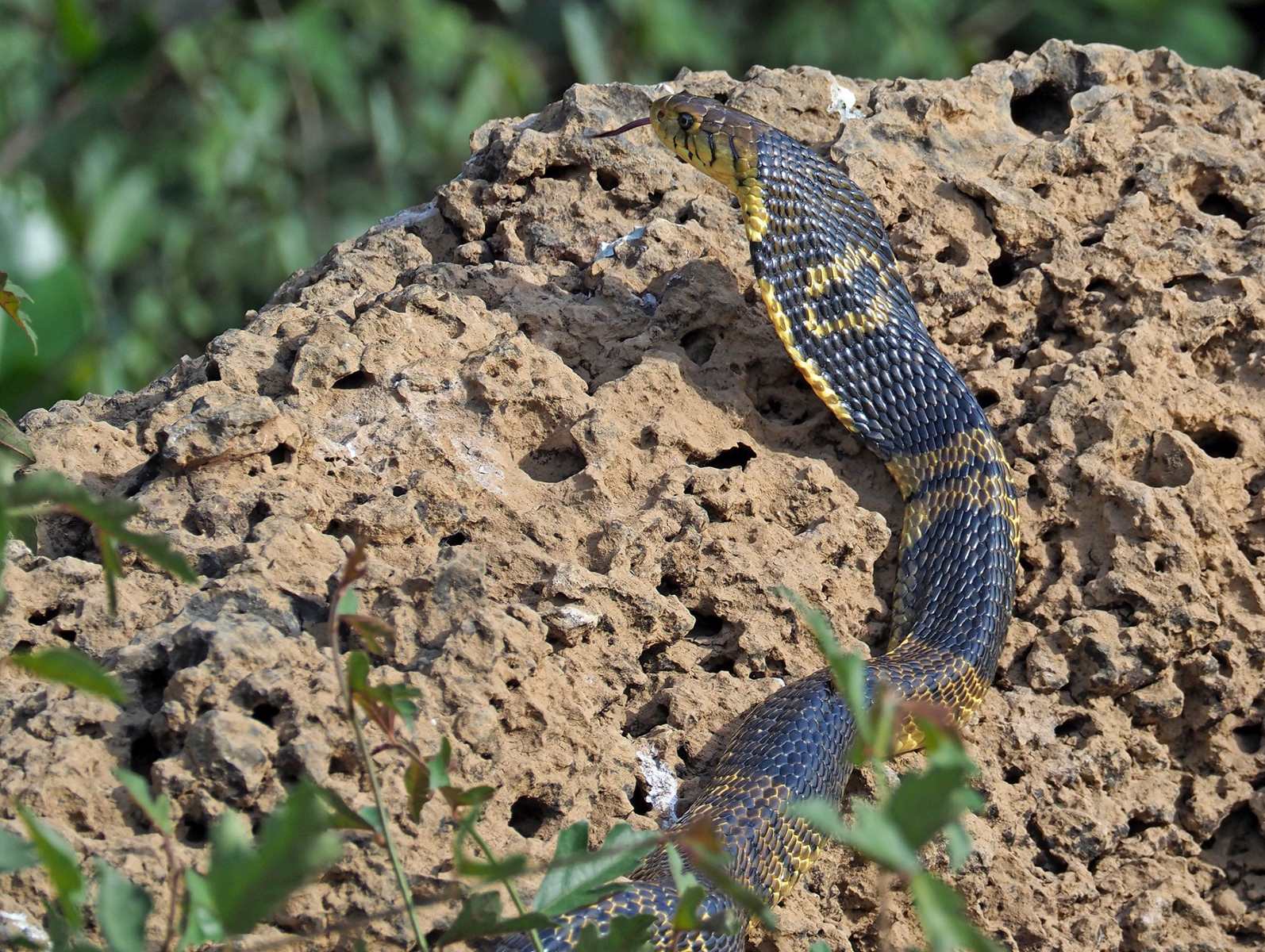
Ever wondered about the slithery inhabitants of West Africa that command both respect and fascination? Yes, we're talking about the West African Banded Cobra, a creature as intriguing as it is dangerous. What makes this serpent stand out in the vast world of reptiles? Well, for starters, its striking appearance and potent venom make it a notable figure in its ecosystem. But there's so much more to this snake than meets the eye. From its unique hunting methods to its surprising social behavior, the West African Banded Cobra is a testament to the wonders of nature. Ready to get up close and personal with one of West Africa's most mesmerizing creatures? Let's slither into the world of the West African Banded Cobra and uncover some fascinating facts that will leave you both educated and amazed.
Key Takeaways:
- The West African Banded Cobra is a venomous snake found in West Africa, known for its distinctive coloration and ability to spread its neck into a hood when threatened. It plays a crucial role in controlling rodent populations.
- This cobra's venom has potential medical applications, but it can also cause severe respiratory failure and even death. It's important to understand and respect these snakes to avoid conflicts and protect their habitat.
What Is the West African Banded Cobra?
The West African Banded Cobra, scientifically known as Naja annulifera, is a highly venomous snake found in the savannas and forests of West Africa. This species is renowned for its distinctive coloration and patterns, which include dark bands across its lighter body, making it easily recognizable.
Where Can You Find the West African Banded Cobra?
- West African Banded Cobras are primarily located in regions stretching from Senegal in the west to Cameroon in the east. Their habitat includes a variety of environments such as dry savannas, moist forests, and even human-populated areas, where they sometimes enter homes or gardens in search of food or shelter.
What Makes the West African Banded Cobra Unique?
-
One of the most fascinating aspects of the West African Banded Cobra is its ability to spread its neck into a hood when threatened. This behavior, combined with its striking coloration, serves as a warning to potential predators and humans alike.
-
Another unique feature is its venom, which is a potent neurotoxin capable of causing severe respiratory failure and even death in untreated cases. The venom also contains cytotoxins, contributing to tissue damage around the bite area.
How Does the West African Banded Cobra Behave?
-
Typically, these cobras are solitary creatures, most active during the early morning and late afternoon. They are known to be quite aggressive when cornered or threatened, readily displaying their hood and hissing loudly to deter predators or humans.
-
Their diet mainly consists of small mammals, birds, and occasionally other snakes. They employ a "sit-and-wait" strategy, relying on their camouflage to ambush prey.
The Reproduction of the West African Banded Cobra
- Reproduction for these cobras involves oviparous breeding, meaning they lay eggs. A female can lay between 10 to 20 eggs per clutch, which she leaves in a hidden location such as a burrow or under debris. The eggs hatch after about 60 to 90 days, with the young snakes being independent from birth.
Conservation Status of the West African Banded Cobra
- Currently, the West African Banded Cobra is not listed as endangered or critically endangered. However, habitat destruction and human conflict pose significant threats to their population. Efforts are being made in some areas to educate locals on avoiding snake bites and the importance of these cobras in controlling rodent populations, which can carry diseases.
Interesting Facts About the West African Banded Cobra
-
Despite their dangerous reputation, West African Banded Cobras play a crucial role in their ecosystem by controlling populations of rodents and other pests.
-
These cobras have been observed using their venom to fish, spitting it into water to immobilize small fish before consuming them.
-
The skin of the West African Banded Cobra is highly prized in some cultures for its supposed medicinal and magical properties, leading to illegal hunting and trading.
-
In captivity, with proper care, these cobras can live up to 20 years, although their lifespan in the wild is generally shorter due to threats from predators and human activities.
-
The West African Banded Cobra's venom has been studied for potential medical applications, including pain relief and treating conditions such as heart attacks and strokes.
-
This species is capable of "spitting" its venom as a defense mechanism, targeting the eyes of predators or threats. This can cause temporary or permanent blindness if not washed out immediately with water.
A Final Glimpse at the West African Banded Cobra
Diving into the world of the West African Banded Cobra has been nothing short of fascinating. From its striking appearance to its potent venom, every fact about this creature adds layers to its mystique. Understanding these snakes isn't just about fueling curiosity; it's about fostering respect and awareness for the role they play in their ecosystems. Whether it's their hunting prowess, unique defense mechanisms, or the challenges they face in their natural habitats, there's a wealth of knowledge to gain. By appreciating these remarkable reptiles, we're reminded of the incredible biodiversity our planet has to offer and the importance of conservation efforts. So, next time you hear about the West African Banded Cobra, you'll know there's more to this serpent than meets the eye.
Frequently Asked Questions
Was this page helpful?
Our commitment to delivering trustworthy and engaging content is at the heart of what we do. Each fact on our site is contributed by real users like you, bringing a wealth of diverse insights and information. To ensure the highest standards of accuracy and reliability, our dedicated editors meticulously review each submission. This process guarantees that the facts we share are not only fascinating but also credible. Trust in our commitment to quality and authenticity as you explore and learn with us.


